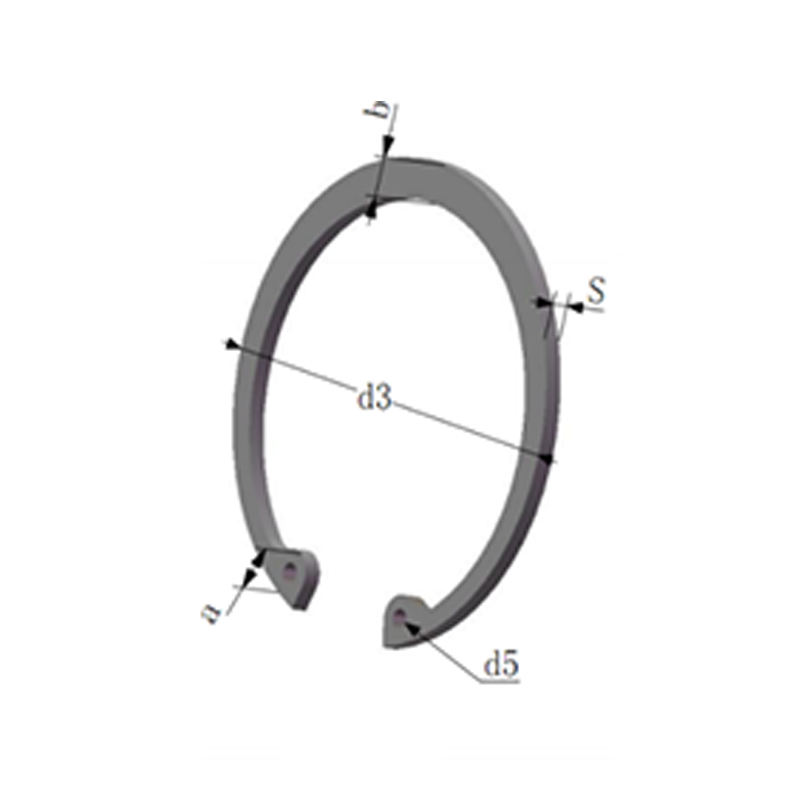The groove width and depth tolerances play a critical role in determining the retention strength, load-bearing capacity, and overall stability of DIN 472 internal circlips. These tolerances ensure a secure fit and prevent circlip failure under operational stress.
1. How Groove Width Tolerance Affects Retention Strength
(a) Narrower Groove Width (Below Tolerance)
-
A groove that is too narrow causes excessive compression of the circlip.
-
This increases radial stress, potentially leading to:
-
Difficult installation due to high insertion force.
-
Deformation or over-flexing, which can weaken the circlip over time.
-
Reduced ability to expand properly, leading to lower effective retention force.
-
(b) Wider Groove Width (Above Tolerance)
-
A groove that is too wide results in loose fitment, reducing the circlip’s ability to maintain axial retention.
-
This can lead to:
-
Reduced contact pressure between the circlip and the groove walls.
-
Increased risk of dislodgment under vibration or axial loads.
-
Micromovements and wear, causing premature groove and circlip failure.
-
Optimal Groove Width Condition
-
The groove width should allow for slight elastic deformation without excessive stress.
-
Correct tolerance ensures the circlip maintains its spring tension while staying securely in place.
2. How Groove Depth Tolerance Affects Retention Strength
(a) Shallow Groove Depth (Below Tolerance)
-
If the groove is too shallow, the circlip does not seat fully, leading to:
-
Reduced surface contact, lowering retention strength.
-
Higher likelihood of circlip ejection when subjected to axial loads.
-
Edge loading, causing stress concentration and potential circlip breakage.
-
(b) Deeper Groove Depth (Above Tolerance)
-
A groove that is too deep can result in:
-
Reduced radial compression, causing a looser fit.
-
Decreased axial holding force, making it easier for the circlip to dislodge.
-
Insufficient engagement with mating components, reducing load distribution efficiency.
-
Optimal Groove Depth Condition
-
The groove depth must allow the circlip to sit flush with the component surface while providing enough material engagement to prevent displacement.

3. Combined Effect on Axial Load Capacity and Performance
-
If both groove width and depth tolerances are within the specified range, the circlip functions effectively by:
-
Maintaining adequate radial tension for secure placement.
-
Preventing excessive movement that could lead to wear or failure.
-
Ensuring high retention force under load without deformation.
-
-
If tolerances are out of specification, it can lead to:
-
Unexpected circlip failure, potentially damaging the assembly.
-
Reduced fatigue life, especially in high-vibration applications.
-
Compromised mechanical integrity, affecting overall system performance.
-

















